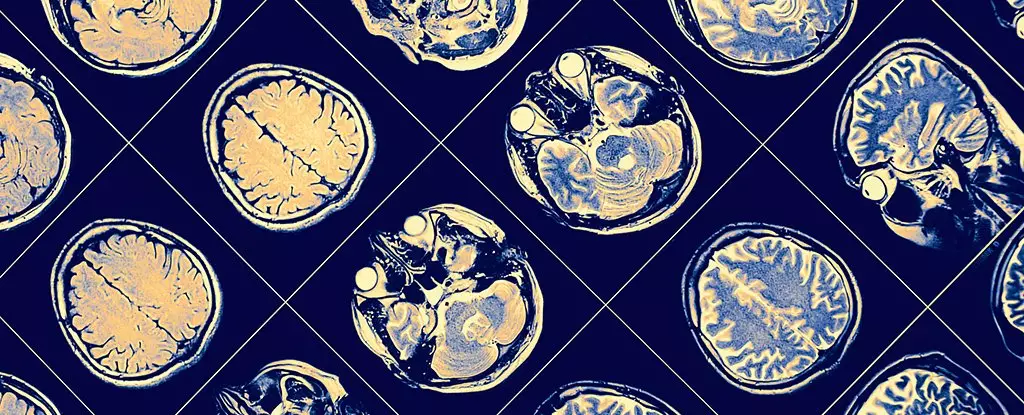Alzheimer’s disease is a devastating condition that affects millions worldwide, leading to cognitive decline and significant loss of memory and functionality. While research has greatly advanced our understanding of this neurological disorder, rare cases continue to challenge our existing knowledge. A recent study has unveiled a remarkable case: a man with a high genetic risk for Alzheimer’s, specifically a PSEN2 mutation, managed to evade typical symptoms for decades despite significant brain markers indicating potential neurodegeneration. This case not only sheds light on the perplexities of genetic predisposition but also opens new avenues for understanding the mechanisms that may lead to resilience against Alzheimer’s.
The PSEN2 mutation is notorious for its strong link to early-onset Alzheimer’s, usually manifesting around the age of 50. This mutation leads to the rapid accumulation of amyloid-beta plaques, a hallmark of the disease. In the man’s family history, this genetic aberration proved calamitous; his mother carried the same mutation, leading to Alzheimer’s diagnoses in the majority of her siblings by their fifth decade. The rarity of his cognitive preservation amidst such a background is astonishing and raises the pivotal question: how did he outmaneuver the genetic fate scripted by his DNA?
Researchers, led by geneticist Maria Victoria Fernandez, have meticulously monitored this man since 2011. By observing his cognitive functions, scientists sought to identify protective factors that could explain his anomaly. Even in the face of overwhelming amyloid presence—characteristic of individuals with the PSEN2 mutation—this man maintained normal cognitive abilities throughout assessments over a decade.
The detection of amyloid plaques in the man’s brain adds a layer of complexity to the ongoing investigation. Scientists commonly observe a correlation between high amyloid levels and the progression of Alzheimer’s, suggesting a direct link to cognitive decline. However, in this case, the presence of amyloid did not equate to the expected neurological unraveling. Instead, researchers found that the man’s brain inflammation was significantly less than that typically observed in Alzheimer’s patients, prompting a re-evaluation of the established understanding of how amyloid-beta contributes to the disease.
Compounding the mystery was the discovery of tau proteins, which are implicated in cognitive decline as they build up and destabilize neurons. In the studied individual, tau was restricted primarily to the occipital lobe, the area associated with vision, suggesting that his cognitive functions remained intact as the damaging protein clumps did not infiltrate other critical regions usually affected by Alzheimer’s. This pattern of localized tau pathology could hold the key to understanding this man’s exceptional resilience.
As researchers delved into genetic analyses, they found nine distinct variants present in the resilient individual that were absent in his affected family members. While some had previously unknown associations with Alzheimer’s, the emergence of these markers inherently promotes questions about their potential roles in brain health. At least six of these variants are linked to inflammation and protein folding processes, hinting that there might be protective genetic factors at play.
Moreover, the man’s profession exposed him to high temperatures during his time as a mechanic on a naval ship, a factor that might have activated beneficial cellular responses over years of chronic stress. Such exposure could have stimulated the heat shock response, a cellular mechanism known to bolster resilience against neurodegenerative diseases. This interplay between genetic potential and environmental triggers posits that both factors collaboratively contribute to safeguarding cognitive faculties despite severe genetic risks.
The extraordinary nature of this case elucidates the urgent need for further exploration into neuroprotective factors in Alzheimer’s. With only a handful of documented instances like this, each suggests the existence of unknown mechanisms that could prevent or significantly delay the onset of Alzheimer’s symptoms despite genetic predispositions. The findings underscore the complexity of Alzheimer’s pathology, emphasizing that the interrelation between amyloid and tau, the environment, and genetic variance is not yet entirely understood.
As researchers continue to investigate this unique case, the hope is that it will inspire further studies on resilience and contribute to devising potential interventions that could assist those with high genetic risks. The secrets of this man’s cognitive preservation may ultimately provide a beacon of hope in the ongoing fight against Alzheimer’s disease, paving the way for transformative approaches to prevention and treatment.

